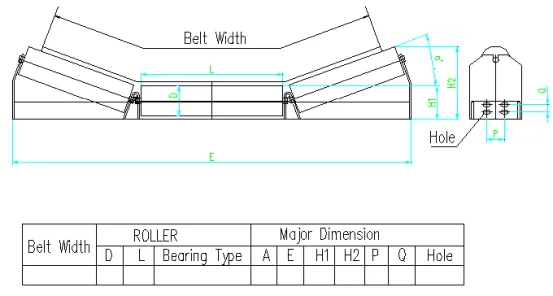 Afrikaans
Afrikaans  Albanian
Albanian  Amharic
Amharic  Arabic
Arabic  Armenian
Armenian  Azerbaijani
Azerbaijani  Basque
Basque  Belarusian
Belarusian  Bengali
Bengali  Bosnian
Bosnian  Bulgarian
Bulgarian  Catalan
Catalan  Cebuano
Cebuano  Corsican
Corsican  Croatian
Croatian  Czech
Czech  Danish
Danish  Dutch
Dutch  English
English  Esperanto
Esperanto  Estonian
Estonian  Finnish
Finnish  French
French  Frisian
Frisian  Galician
Galician  Georgian
Georgian  German
German  Greek
Greek  Gujarati
Gujarati  Haitian Creole
Haitian Creole  hausa
hausa  hawaiian
hawaiian  Hebrew
Hebrew  Hindi
Hindi  Miao
Miao  Hungarian
Hungarian  Icelandic
Icelandic  igbo
igbo  Indonesian
Indonesian  irish
irish  Italian
Italian  Japanese
Japanese  Javanese
Javanese  Kannada
Kannada  kazakh
kazakh  Khmer
Khmer  Rwandese
Rwandese  Korean
Korean  Kurdish
Kurdish  Kyrgyz
Kyrgyz  Lao
Lao  Latin
Latin  Latvian
Latvian  Lithuanian
Lithuanian  Luxembourgish
Luxembourgish  Macedonian
Macedonian  Malgashi
Malgashi  Malay
Malay  Malayalam
Malayalam  Maltese
Maltese  Maori
Maori  Marathi
Marathi  Mongolian
Mongolian  Myanmar
Myanmar  Nepali
Nepali  Norwegian
Norwegian  Norwegian
Norwegian  Occitan
Occitan  Pashto
Pashto  Persian
Persian  Polish
Polish  Portuguese
Portuguese  Punjabi
Punjabi  Romanian
Romanian  Russian
Russian  Samoan
Samoan  Scottish Gaelic
Scottish Gaelic  Serbian
Serbian  Sesotho
Sesotho  Shona
Shona  Sindhi
Sindhi  Sinhala
Sinhala  Slovak
Slovak  Slovenian
Slovenian  Somali
Somali  Spanish
Spanish  Sundanese
Sundanese  Swahili
Swahili  Swedish
Swedish  Tagalog
Tagalog  Tajik
Tajik  Tamil
Tamil  Tatar
Tatar  Telugu
Telugu  Thai
Thai  Turkish
Turkish  Turkmen
Turkmen  Ukrainian
Ukrainian  Urdu
Urdu  Uighur
Uighur  Uzbek
Uzbek  Vietnamese
Vietnamese  Welsh
Welsh  Bantu
Bantu  Yiddish
Yiddish  Yoruba
Yoruba  Zulu
Zulu Effective Solutions for Conveyor Pulley Lagging and Maintenance Techniques
Understanding Conveyor Pulley Lagging Importance and Benefits
Conveyor systems play a crucial role in various industries, facilitating the movement of materials across different stages of production and operations. Among the vital components of these systems are conveyor pulleys, which are essential for directing and supporting the conveyor belt. However, the longevity and efficiency of conveyor pulleys can be significantly enhanced through a process known as pulley lagging.
What is Conveyor Pulley Lagging?
Pulley lagging refers to the application of a wear-resistant material on the surface of the conveyor pulley. This protective layer serves multiple purposes, primarily aimed at ensuring better traction between the pulley and the conveyor belt. Typically made from rubber or other engineered materials, lagging provides a rough surface that enhances grip and reduces slippage, thereby optimizing the performance of the conveyor system.
Importance of Pulley Lagging
1. Improved Traction The primary purpose of lagging is to increase the frictional contact between the belt and the pulley. Enhanced traction minimizes slippage, especially in conditions where the belt faces heavy loads or when operating on an incline.
2. Protection from Wear and Tear Conveyor pulleys are subject to considerable wear due to constant abrasion from the belt and the materials being transported. Lagging acts as a protective barrier, shielding the pulley from direct contact with the abrasive materials, thus extending the life of both the pulley and the belt.
3. Reduced Maintenance Costs By preventing premature wear and slippage, lagging contributes to decreased maintenance requirements. A well-lagged pulley system reduces the frequency of downtime for repairs, ultimately lowering the operational costs for businesses.
4. Enhanced Performance in Wet and Slippery Conditions Moisture and other slippery substances can lead to significant challenges in conveyor operations. Rubber lagging, in particular, offers exceptional performance in such conditions by maintaining a reliable grip, thereby ensuring continuous operation even in adverse environments.
conveyor pulley lagging

5. Minimized Noise and Vibration Lagging materials can also absorb vibrations caused by the operation of the conveyor system, contributing to a quieter environment. This feature is particularly beneficial in settings where noise reduction is essential for compliance or worker comfort.
Types of Conveyor Pulley Lagging
There are various types of lagging available, each suited to different operational requirements.
- Rubber Lagging The most commonly used type, rubber lagging, provides excellent durability and traction. It is suitable for a wide range of applications and conditions.
- Ceramic Lagging This type incorporates ceramic tiles into rubber, significantly enhancing abrasion resistance. It is particularly effective in environments where the material being transported is extremely abrasive.
- Polyurethane Lagging Known for its exceptional wear and tear resistance, polyurethane lagging offers an alternative for industries where rubber may not suffice. It can also provide good performance in high-temperature environments.
Conclusion
In conclusion, conveyor pulley lagging is an essential investment for industries relying on conveyor systems. By enhancing traction, protecting against wear, and reducing maintenance needs, lagging improves the overall efficiency and longevity of conveyor operations. Moreover, the availability of different types of lagging allows businesses to select the best option tailored to their specific operational conditions. Properly maintained and lagged pulleys lead to a more effective conveyor system, ultimately contributing to increased productivity and decreased operational costs. In the fast-paced industrial landscape, ensuring the reliability of conveyor systems through proper pulley lagging should be a priority for all businesses aiming for long-term success.
-
Revolutionizing Conveyor Reliability with Advanced Rubber Lagging PulleysNewsJul.22,2025
-
Powering Precision and Durability with Expert Manufacturers of Conveyor ComponentsNewsJul.22,2025
-
Optimizing Conveyor Systems with Advanced Conveyor AccessoriesNewsJul.22,2025
-
Maximize Conveyor Efficiency with Quality Conveyor Idler PulleysNewsJul.22,2025
-
Future-Proof Your Conveyor System with High-Performance Polyurethane RollerNewsJul.22,2025
-
Driving Efficiency Forward with Quality Idlers and RollersNewsJul.22,2025





























